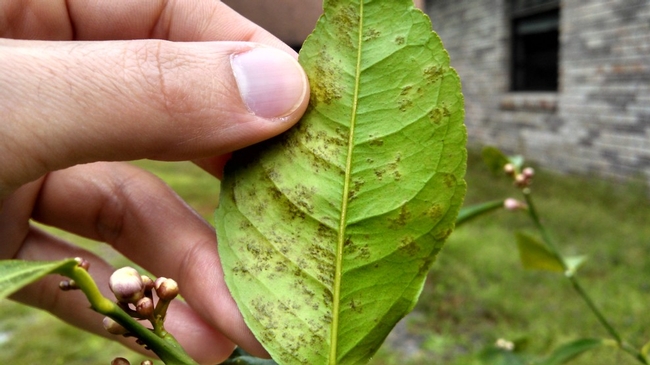Edema may be caused by any agent that stimulates an abnormal increase in the size and number of a group of inner cells. Edema can be induced by (1) spraying with some chemicals such as ammoniacal copper carbonate in an oil emulsion, (2) injuries resulting from wind-blown sand particles and sucking insects, (3) high light intensity (over 2000 foot-candles) for ivy geraniums, and (4) accumulation of water in the intercellular spaces.
The most common cause of edema is the presence of abundant, warm soil water and a cool, moist atmosphere. Under these conditions the roots absorb water at a rate faster than is lost through transpiration. Excess water accumulates in the leaf, some parenchyma cells enlarge and block the stomatal openings through which water vapor is normally released from the plant; thereby contributing to further water retention in the leaf. If this condition persists, the enlarged cells divide, differentiate a cork cambium, and develop elongate cork cells externally to form a periderm. The rupture of the epidermis by the enlarged inner cells and the periderm account for the raised, crusty appearance of older edema spots and also corky veins.
Changes in weather and cultural practices of growing plants usually will avoid edema. To reduce the risk of edema occurrence, the following may be helpful:
1. Avoid irrigation or watering during cool, overcast humid weather. For potted plants in greenhouses, remove saucers under pots, or discard any water that remains in the saucer 30 minutes after watering. Irrigate or water when air temperature are rising or humidity is low.
2. In greenhouses: a) reduce the humidity of the air by venting and increasing heat; b) improve air circulation; c) increase light intensity; d) space the plants farther apart; e) for potted plants use a well-drained potting medium for potted plants and avoid standing water in saucers under the pots.
3. Avoid overfertilizing, especially when the plants are growing slowly, such as during the winter months. Maintain fertility based on a soil test. Avoid low levels of potassium and calcium.
4. Avoid cultivars that are highly susceptible to edema under your growing conditions.
Photo:
The black spots on the fruit start out as a clear exudate. The same for the brown spots on the leaves.
Attached Images:

